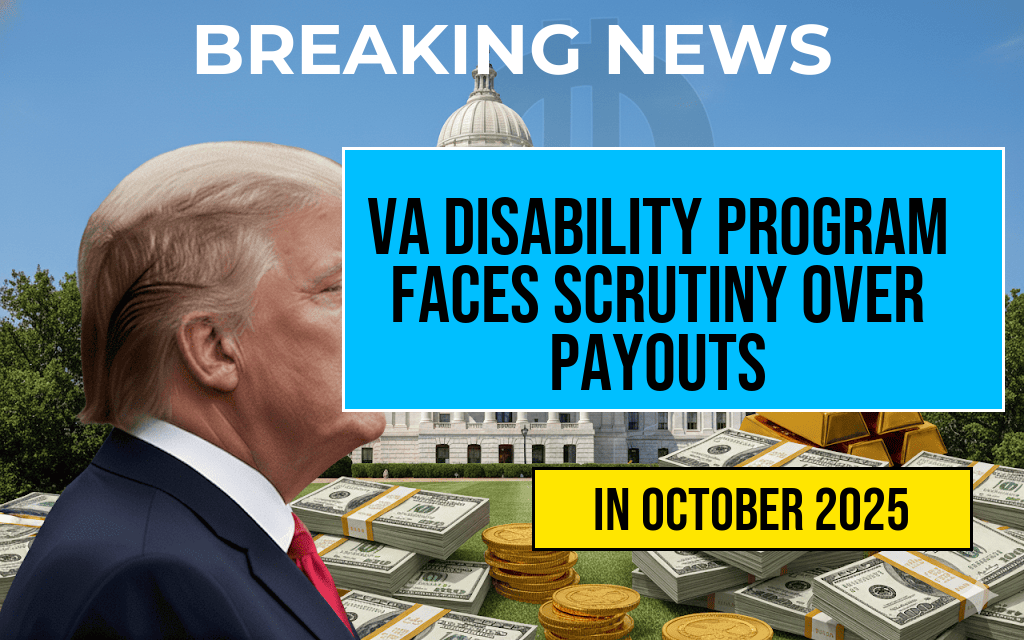The U.S. Department of Veterans Affairs (VA) disability program is facing intense scrutiny as it grapples with a staggering $193 billion in payouts, raising concerns about its sustainability and efficacy. With approximately 5.5 million veterans currently receiving benefits, the program is under pressure to ensure that funds are allocated appropriately while also addressing the needs of those who have served. Recent investigations have highlighted issues surrounding the claims process, potential fraud, and the adequacy of support for veterans suffering from service-related disabilities. As lawmakers call for reforms, the future of the VA disability program remains uncertain.
Understanding the Scope of VA Disability Benefits
VA disability benefits are designed to provide financial support to veterans who have incurred injuries or illnesses as a result of their military service. These benefits are crucial for many veterans, who often face difficulties transitioning to civilian life.
Types of Benefits Offered
- Monthly Compensation: Financial payments based on the severity of the disability.
- Vocational Rehabilitation: Services to help veterans gain employment or improve their skills.
- Education Benefits: Financial assistance for education and training programs.
Recent Investigations into the VA Disability Program
Recent investigations have shed light on various shortcomings within the VA disability program. Issues such as lengthy claims processing times, inconsistent evaluations, and potential fraud have raised alarms among veterans and advocates alike.
Claims Processing Challenges
One of the most pressing concerns is the length of time it takes to process claims. Veterans often face delays that can extend for months or even years, during which time many struggle with financial instability. In an effort to address these challenges, the VA has implemented new technologies and streamlined processes. However, critics argue that these measures have not sufficiently improved the situation.
Fraud and Mismanagement Allegations
Allegations of fraud and mismanagement within the VA disability program have also emerged. Investigators have found instances where individuals have fraudulently claimed benefits, leading to calls for stricter oversight and verification processes. The VA has responded by promising to enhance its fraud detection capabilities and increase accountability among its employees.
The Financial Implications
The financial implications of the current state of the VA disability program are significant, with $193 billion in payouts at stake. This amount represents a considerable portion of the federal budget and raises questions about sustainability. As veterans’ needs evolve, so too does the pressure on the VA to adapt its programs and funding models.
Budget Constraints and Future Funding
Lawmakers are concerned about the long-term viability of the VA disability program, especially as the number of veterans requiring benefits continues to rise. The increasing costs associated with healthcare and housing for veterans add to the urgency of reforming the program. As budget constraints tighten, discussions around potential solutions, such as reallocating funds and increasing efficiency, are gaining traction.
Veterans’ Perspectives and Advocacy
Veterans themselves are voicing their concerns about the current state of the VA disability program. Many advocate for more comprehensive support services that go beyond financial compensation. Mental health resources, job training, and community integration programs are essential for ensuring that veterans can successfully transition to civilian life.
Advocacy Groups Demand Reforms
Various advocacy groups are calling for reforms to the VA disability program. These organizations emphasize that the needs of veterans should be prioritized and that the program must evolve to meet those needs effectively. Increased funding for mental health services, improved claims processes, and stronger oversight measures are among the key reforms being proposed.
Conclusion: The Path Forward
The VA disability program stands at a crossroads, with significant reforms needed to address the challenges it faces. As investigations into fraud and efficiency continue, the future of veterans’ benefits remains uncertain. Stakeholders, including veterans, lawmakers, and advocacy groups, must work collaboratively to ensure that the program can fulfill its mission of supporting those who have sacrificed for their country.
For more information on the VA disability program, visit VA Disability or learn about veterans’ rights at NVRC.
Frequently Asked Questions
What is the current status of the VA Disability Program?
The VA Disability Program is currently under scrutiny due to concerns about the allocation of funds, with approximately $193 billion in payouts at stake. This scrutiny has raised questions about the program’s efficiency and effectiveness in serving veterans.
Why are there concerns about the payouts from the VA?
Concerns regarding the payouts stem from allegations of mismanagement and potential fraud within the VA Disability Program. Critics argue that the system may not be providing adequate support to those veterans who truly need it, while resources could be misallocated.
How does the VA Disability Program determine eligibility for benefits?
Eligibility for VA Disability benefits is determined based on a veteran’s service-related injuries or conditions, assessed through a comprehensive evaluation process that includes medical records and examinations.
What impact could this scrutiny have on veterans seeking disability benefits?
The ongoing scrutiny of the VA Disability Program could lead to changes in the application process for disability benefits, potentially making it more difficult for some veterans to access the support they need.
What steps is the VA taking to address the issues raised about the disability program?
The VA is reportedly reviewing its procedures and policies to improve transparency and accountability within the disability program. This includes efforts to enhance training for staff and streamline the claims process to better serve veterans.





